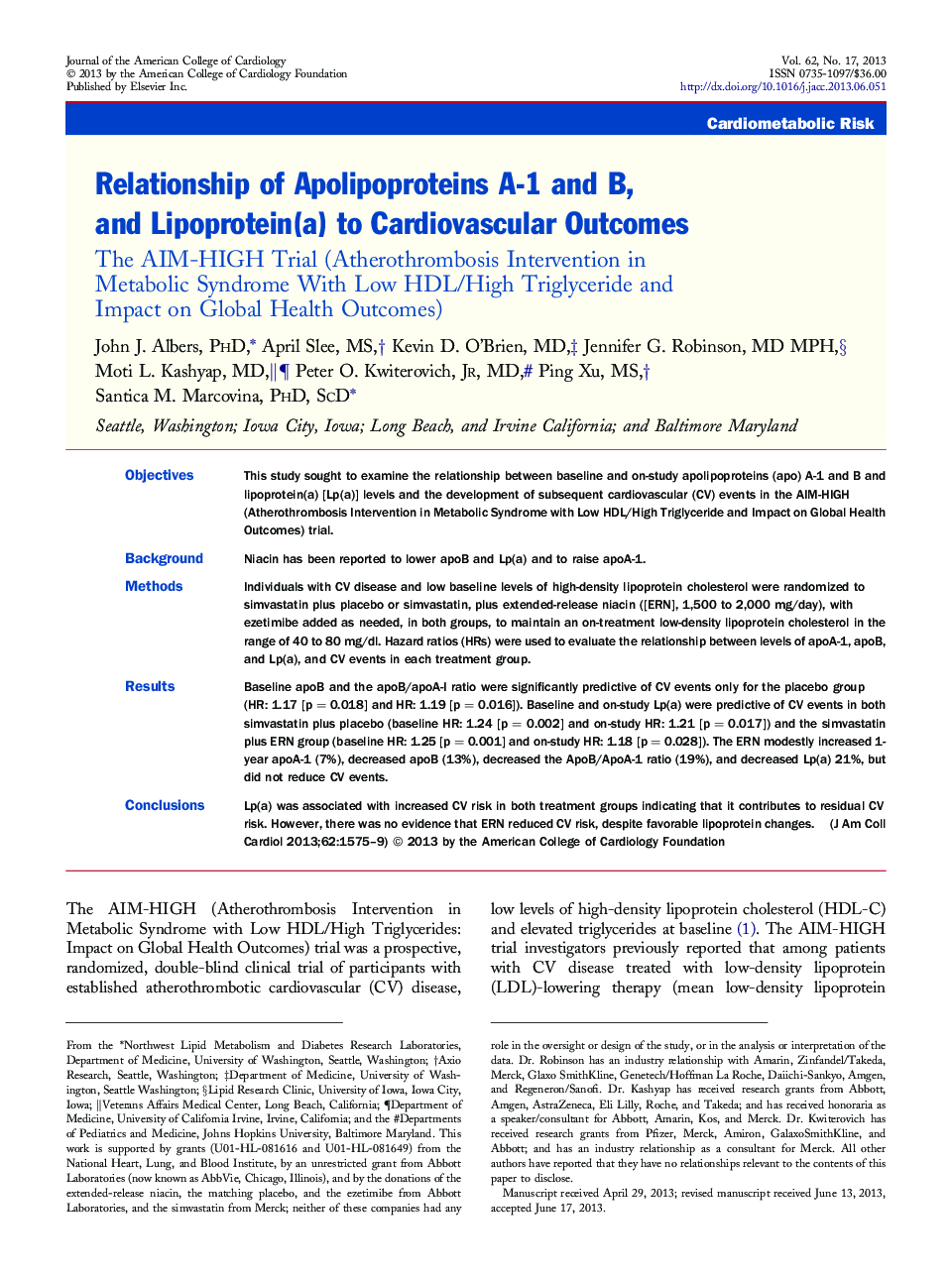| کد مقاله | کد نشریه | سال انتشار | مقاله انگلیسی | نسخه تمام متن |
|---|---|---|---|---|
| 2947030 | 1577135 | 2013 | 5 صفحه PDF | دانلود رایگان |

ObjectivesThis study sought to examine the relationship between baseline and on-study apolipoproteins (apo) A-1 and B and lipoprotein(a) [Lp(a)] levels and the development of subsequent cardiovascular (CV) events in the AIM-HIGH (Atherothrombosis Intervention in Metabolic Syndrome with Low HDL/High Triglyceride and Impact on Global Health Outcomes) trial.BackgroundNiacin has been reported to lower apoB and Lp(a) and to raise apoA-1.MethodsIndividuals with CV disease and low baseline levels of high-density lipoprotein cholesterol were randomized to simvastatin plus placebo or simvastatin, plus extended-release niacin ([ERN], 1,500 to 2,000 mg/day), with ezetimibe added as needed, in both groups, to maintain an on-treatment low-density lipoprotein cholesterol in the range of 40 to 80 mg/dl. Hazard ratios (HRs) were used to evaluate the relationship between levels of apoA-1, apoB, and Lp(a), and CV events in each treatment group.ResultsBaseline apoB and the apoB/apoA-I ratio were significantly predictive of CV events only for the placebo group (HR: 1.17 [p = 0.018] and HR: 1.19 [p = 0.016]). Baseline and on-study Lp(a) were predictive of CV events in both simvastatin plus placebo (baseline HR: 1.24 [p = 0.002] and on-study HR: 1.21 [p = 0.017]) and the simvastatin plus ERN group (baseline HR: 1.25 [p = 0.001] and on-study HR: 1.18 [p = 0.028]). The ERN modestly increased 1-year apoA-1 (7%), decreased apoB (13%), decreased the ApoB/ApoA-1 ratio (19%), and decreased Lp(a) 21%, but did not reduce CV events.ConclusionsLp(a) was associated with increased CV risk in both treatment groups indicating that it contributes to residual CV risk. However, there was no evidence that ERN reduced CV risk, despite favorable lipoprotein changes.
Journal: Journal of the American College of Cardiology - Volume 62, Issue 17, 22 October 2013, Pages 1575–1579